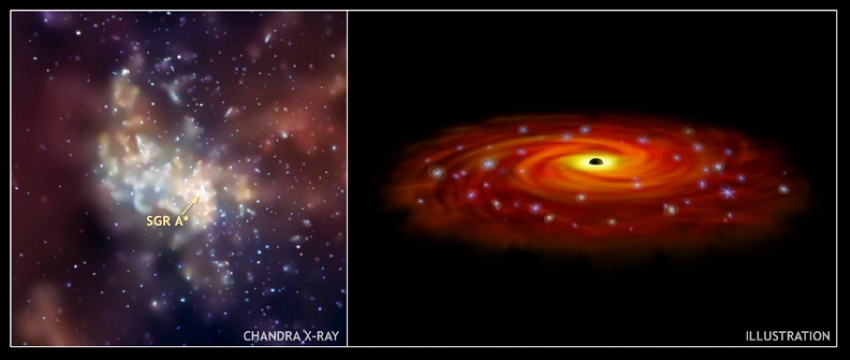
 Credit: NASA/CXC/MIT/F.K.Baganoff et al.; Illustration: NASA/CXC/M.Weiss
Credit: NASA/CXC/MIT/F.K.Baganoff et al.; Illustration: NASA/CXC/M.Weiss
Shelter In Place
The inhospitable region near the Milky Way's
central supermassive black hole, is, surprisingly, a nursery. The babies born there are large, massive stars, as shown by a number of satellite observatories like the Hubble Space Telescope, the Chandra X-ray Observatory and the Spitzer Space Telescope. But how did they get there? Did they form somewhere else and "fall downhill" towards the black hole, or do such stars actually form near the black hole? If the massive stars form elsewhere and "migrate" towards the center of the Galaxy, then they should bring along lots of baggage in the form of lower mass stars, which would get dragged along. But astronomers have used the Chandra X-ray Observatory to compare the amount of X-ray emission from these clusters with nearby clusters which have both massive and low mass stars. They found that the massive star clusters near the Galactic center did not show much emission from low mass stars. This likely means the massive Galactic center clusters probably formed near the supermassive black hole - but how?
Last Week *
HEA Dictionary * Archive
* Search HEAPOW
* Education
Each week the HEASARC
brings you new, exciting and beautiful images from X-ray and Gamma ray
astronomy. Check back each week and be sure to check out the HEAPOW archive!
Last modified Tuesday, 27-Feb-2024 10:10:17 EST


